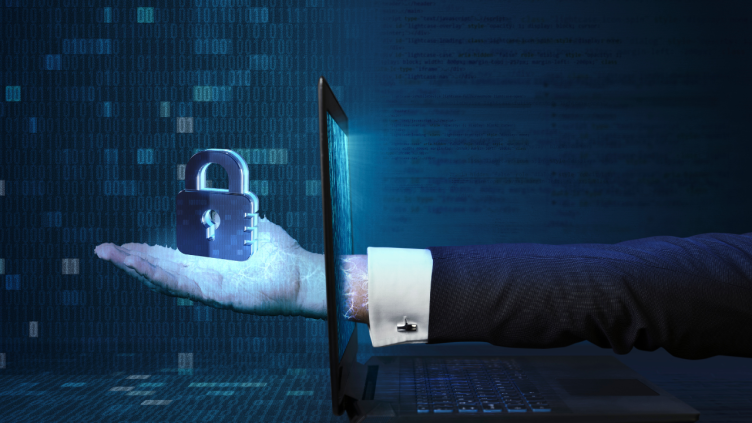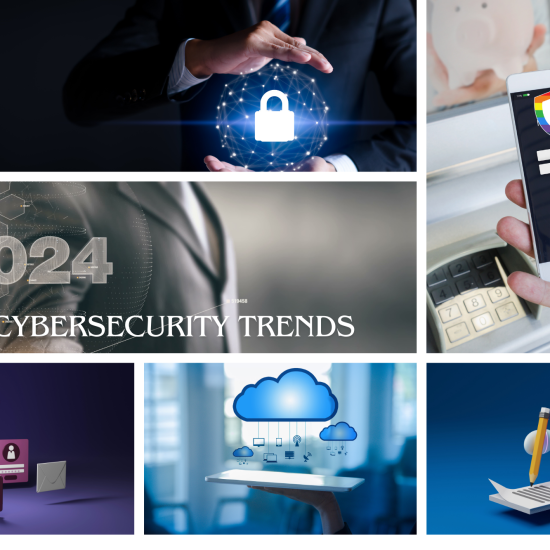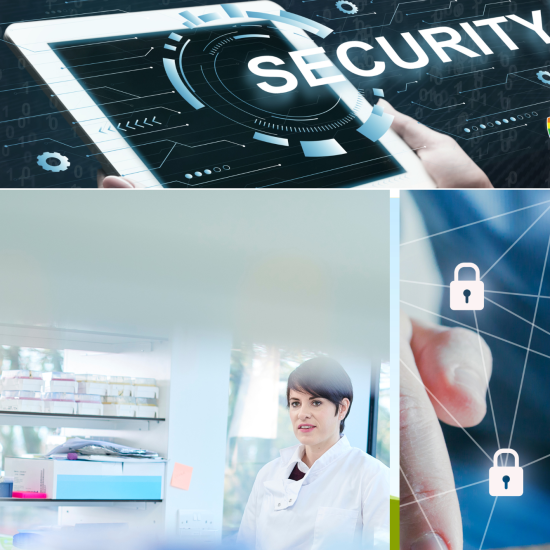The Need for Zero Trust Security in Today’s Cybersecurity Landscape
With an increase in the frequency of cyber- attacks and the emergence of new threat vectors, the cybersecurity landscape is becoming more challenging by the day. The aftermaths of pandemic have added to the complexity with the rise of remote work, making it imperative to have a security model that’s suitable for ever changing and challenging cloud-first, on-premises and hybrid model organizations. Traditional security methods are no longer sufficient, and newer approaches, such as Zero Trust Security, are gaining popularity.
The Zero Trust model prioritizes identity verification before granting access, making it more reliable than traditional security methods. End users play a crucial role in this model by verifying their identity throughout the access transaction. Multi-factor authentication (MFA) is critical to the success of this model.
In this article, you will read about:
Addressing Today’s Cybersecurity Issues with Zero Trust
Strengthening Security with Zero Trust Policies and Processes
Components of a Zero Trust Architecture
The Significance of MFA in Implementing Zero Trust
Leveraging MFA to Achieve Zero Trust: A Game-Changer for Small to Medium-Sized Enterprises
How can Rainbow Secure help?
Addressing Today’s Cybersecurity Issues with Zero Trust
Today’s cybersecurity challenges arise from the rise of endpoints within organizational networks, including through cloud-based tools, SaaS apps, and personal devices used for work. The Zero Trust model offers a solution to this challenge by requiring verification for each access request. It assumes that valid credentials alone are insufficient to confirm the identity of the user, as attackers may exist both inside and outside the network. Therefore, multiple checks are required before authorization is granted, eliminating the traditional network perimeter and implementing a perimeter instead around each individual user. This approach minimizes threat vectors that can arise from compromised identities, devices, and networks.
Strengthening Security with Zero Trust Policies and Processes
Today’s organizations need to guarantee the authentication, authorization, and continuous validation of all users and devices. To achieve this, it’s crucial to implement zero trust security policies that assume none of the network’s users, devices, or applications are trustworthy. Here’s how to implement zero trust security in your organization:
Evaluate and Enhance Security Tools
Traditional network security tools are often incompatible with the end-to-end zero trust architecture model. Conduct a security evaluation of your security tools, and where you find gaps, identify tools or technologies that can provide an extra layer of protection. Modern security tools integrate with each other and can share data to help cover for each other’s shortcomings.
The following tools are commonly used to meet the requirements of the zero-trust framework:
- Network micro-segmentation
- Single sign-on (SSO) for all applications and data
- Multi-factor authentication (MFA)
- Advanced threat protection tools including endpoint protection platforms (EPP), endpoint detection and response (EDR), and extended detection and response (XDR)
Define and Apply Zero Trust Policies
After acquiring the right tools, establish a zero-trust policy that guides the configuration and management of the tools. A zero-trust policy is a strict set of rules that restrict access to resources only when necessary.
Your policy should be highly detailed, defining:
- When and which users can access data and services
- When and which devices and workloads can access data and services
- Which network segments are allowed to access other segments?
The process is to define these policies at an abstract level, then configure each security tool in line with the policies. Zero trust security platforms are emerging that enable organizations to define these policies centrally and apply them automatically to the entire ecosystem of security tools.
Monitor and Alert
Zero trust requires thorough monitoring and effective alerting technology:
- Monitoring tools must provide security personnel with insight into the effectiveness of the security policy and reveal gaps in the zero-trust framework.
- Alerting tools must capture malicious activity when it happens and report it to the appropriate staff for immediate action.
Keep in mind that even with a zero-trust framework, nothing is entirely secure. Security teams must be acutely aware of what’s happening in the environment. When security incidents occur, they must perform a root cause analysis to identify and repair existing security mechanism flaws.
Components of a Zero Trust Architecture
A Zero Trust model requires the following components to ensure maximum security:
- Identity Trust: In a Zero Trust model, a user’s identity must be verified before access is granted. The user’s attributes, role, and group must be identified, but this alone is not enough to grant access due to the vulnerability of traditional passwords.
- Device Trust: Even with the correct credentials, access is not allowed in a Zero Trust model unless the request originates from a known, secure device with device-installed agents and certificates linked to specific users.
- Network Trust: Organizations can maintain control over which IP addresses to allow and deny, ensuring that access requests originating from whitelisted IPs are processed while others are denied.
- Method for Establishing Trust: Multi-Factor Authentication (MFA) is critical to establishing trust in a Zero Trust model, challenging the user with more than one proof point simultaneously to make it difficult to fake a trusted identity, device, or network.
By implementing Zero Trust architecture, organizations can reduce the risk of cybersecurity breaches and protect their sensitive data.
The Significance of MFA in Implementing Zero Trust
Multi-Factor Authentication (MFA) is a security feature that adds an additional layer of protection by requiring users to verify their identity through a combination of something they know (password) and something they have or are. This can include an app-based passcode generator, registered device, or hardware key. Biometrics like facial recognition or fingerprint sensors can also be utilized.
MFA is an important component of the Zero Trust model because it prevents attackers from gaining access to resources even if they manage to compromise a specific element. MFA challenges are presented when a user tries to log in, requiring them to provide a code, approve a login via push notification, or use a biometric sensor to proceed. MFA also mitigates persistence and lateral movement attacks since a successful verification is generally only valid for a single session.
In essence, MFA makes it much more difficult and expensive for an attacker to access an organization’s resources using valid credentials. Historically, attackers have relied on this method to gain illicit access. By making it challenging to compromise their resources, organizations can deter attackers and encourage them to look for easier targets.
Leveraging MFA to Achieve Zero Trust: A Game-Changer for Small to Medium-Sized Enterprises
Small to medium-sized enterprises (SMEs) can greatly benefit from MFA implementation in a Zero Trust model. This is due to the reliable security it provides and, when done correctly, its user-friendly nature. With relative ease, SMEs can ensure device, network, resource, and user security.
However, the success of MFA hinges on striking a balance between tight controls and a seamless user experience. Excessive friction can cause users to develop workarounds that create new security risks. Intelligent and adaptive MFA policies can be developed to improve the user experience without compromising security. For instance, Rainbow Secure smart multifactor authentication offers organizations a MFA with smart moves that protect your business and customers. It secures your business transactions, critical system access, offline experience, IoT transactions & regulatory data fields with multi-layer security. Smart Multi-Factor Authentication from Rainbow Secure adjusts to your use case, reduces the cyber liabilities of a business from stolen credentials and improves productivity, and enhances user experience.
Implementing zero trust security involves leveraging a range of tools, such as endpoint security systems, granular access control, and multi-factor authentication. Ultimately, a zero-trust implementation is designed to help organizations safeguard their networks against sophisticated threats, as well as improve compliance with regulations like HIPAA, PCI, GDPR, CCPA, and FISMA etc..
How can Rainbow Secure help?
Right amount of data and system access to right person or role at right time is the key to organizations being able to use digital tools and platforms to serve the customer base and stay compliant.
Next Generation Rainbow Secure platform is a modern identity authentication (MFA) and single sign- on (SSO) solution for your business across on-premises and cloud environments. It’s backed by an experienced team of cloud and security experts, years of innovation, and partnerships with leading cloud platforms. Rainbow Secure is a Leader in Smart and Secure Digital Solutions that work for you.
Insider Threats: Rainbow Secure assists in mitigating insider threats by implementing access controls, user monitoring, and privilege management solutions. Also, if the user leaves behind unlocked devices, saved passwords in the password manager or browser can be misused by malicious insiders. Interactive login security from Rainbow Secure helps prevents unauthorized access and protects against data theft or misuse by privileged users.
ChatGPT Security for business: Secure your ChatGPT login and Data with Rainbow Secure MFA Plugin.
Secure AI Integration: Consult Rainbow Secure Team to integrate AI in your business workflows powered by Azure and Rainbow Secure API.
Secure Workforce & Customer login: Use Authentication Plug-in by Rainbow Secure to secure workforce and customer logins. In this plug-in, you get a multi-dimensional password, passwordless login solutions with AI monitoring, Risk Analytics, and location fencing.
IoT Friendly Security: IoT platform developers can secure their cloud endpoints, and user logins (both admin and customer) against unauthorized access and scripted malware attacks using easy to adapt and support multi-layer interactive rainbow secure authentication solutions and services that includes but not limited to security assessment, API Security, secure user onboarding, and risk analytics.
Secure Data and its Backups We provide Cloud based data vault and data archive solutions backed by Microsoft Azure and secured by our authentication plugin and industry best practices to give you ransomware protection, help with data governance and disaster mitigation.
Database Security We provide technical consulting services to Secure Databases in cloud and on premise. You get best protection for your data in databases using native and third-party security tools.
Meet Compliance Requirements: Use Authentication Plug-in by Rainbow Secure with your business application and in SSO (Single Sign-on) and meet industry standards and compliance regulations such as NIST, ISO, FTC, SOX, SOC2, CMMC, CMMI, HIPAA, PCI, and others.
Securely communicate and Collaborate: Use Secure Business Email by Rainbow Secure and get protection against account takeover, phishing, ransomware, and automated login cyber frauds. In this email, you get options to send encrypted emails, single sign-on with Office 365, and Google, and 1 TB one drive storage.
Connect Business applications: Get one unified login using Rainbow Secure Single Sign-On
Manage User Onboarding / Offboarding using Rainbow Secure IAM
Verify User using Smart Multi-factor MFA. Smart Multi-Factor Authentication from Rainbow Secure which adjusts to your use case, reduces the cyber liabilities of a business from stolen credentials and improves productivity, and enhances user experience.
Do you have more questions about how Rainbow Secure’s innovative modern identity authentication (MFA) and single sign- on (SSO) solutions safeguard your business and enhance user productivity for your business across on-premises and cloud environments? Contact us today. Email us at Hello@rainbowsecure.com







